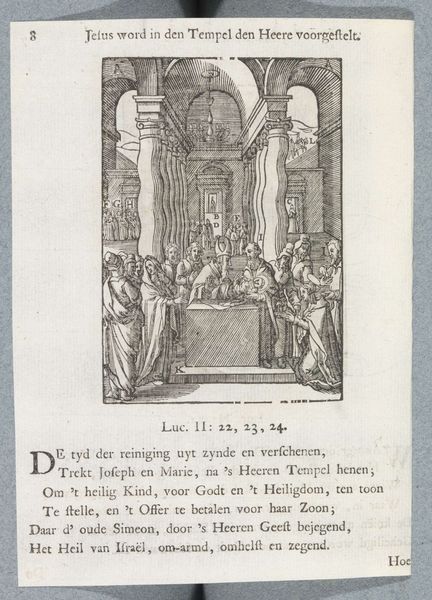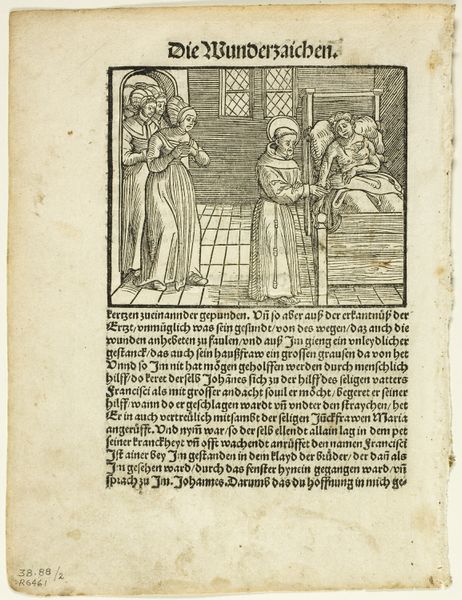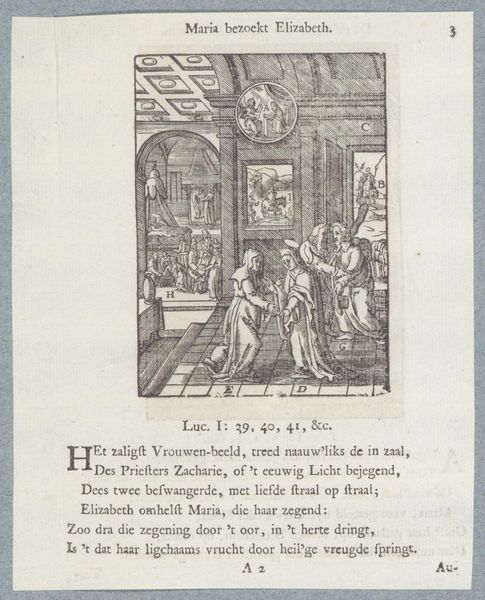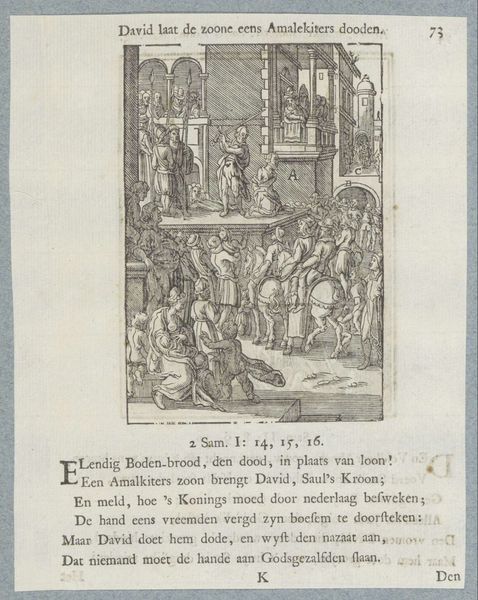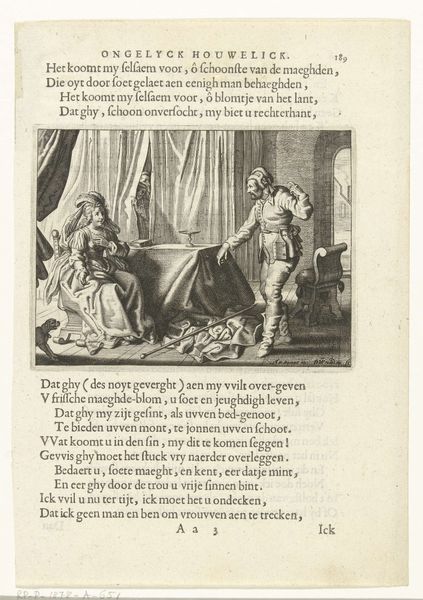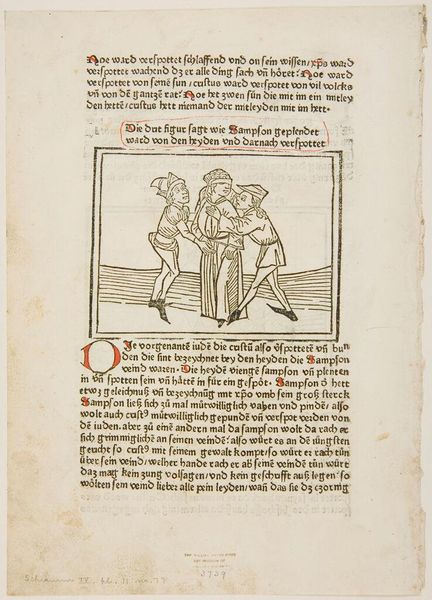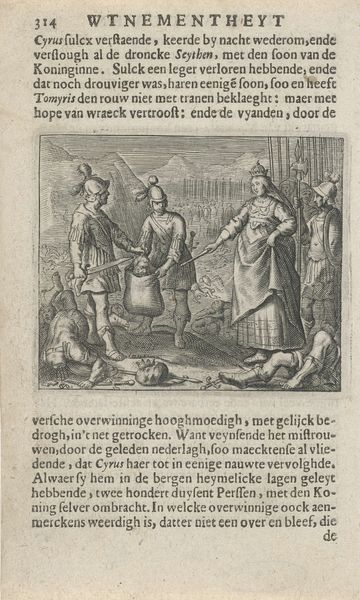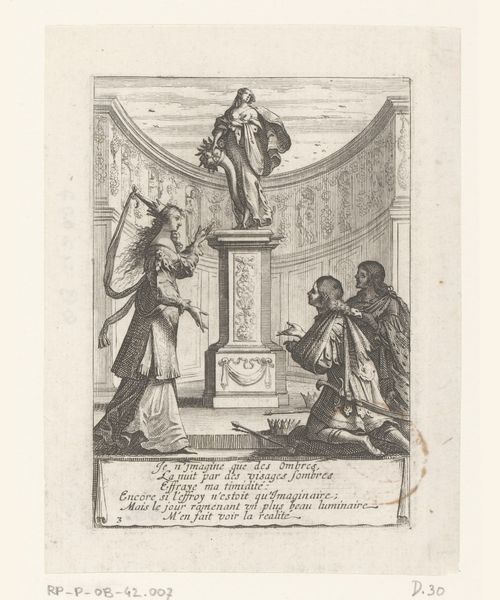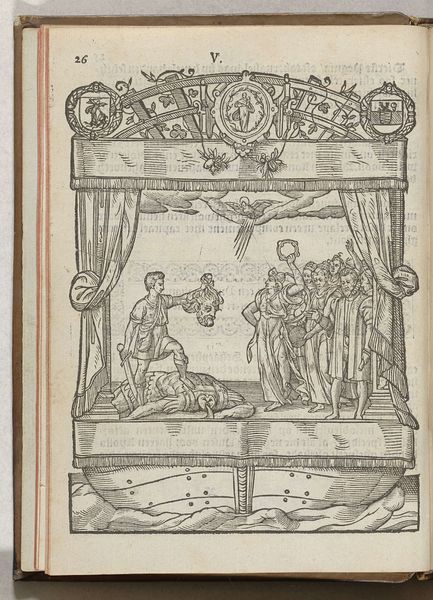
drawing, print, engraving
#
drawing
#
aged paper
#
narrative-art
#
baroque
# print
#
old engraving style
#
figuration
#
history-painting
#
engraving
Dimensions: height 55 mm, width 64 mm, height 119 mm, width 69 mm
Copyright: Rijks Museum: Open Domain
Curator: Look at this intriguing print, "Man klopt op deur," created around 1686 by an anonymous artist. It’s an engraving. Editor: It's...quaint. The linework feels stiff, almost like folk art, but there’s a narrative pulling me in. The contrast between the delicate lines and the forceful image of someone knocking makes it captivating. Curator: Absolutely. This work presents an allegorical scene likely tied to religious or moral instruction of the period. It depicts a man earnestly knocking at a grand, imposing door. Note the poem above and below. The Rijksmuseum holds this piece; its very existence there highlights the power and role of printmaking in shaping cultural beliefs. Editor: I notice how the artist uses line density to suggest form. The figure at the door seems almost flat compared to the depth they attempt to create with those columns. It creates a curious tension. Curator: Indeed, the rather rigid composition directs your eye toward the knocking man as the central focus, emphasizing the act of supplication and perseverance central to religious thought. His persistence represents, in many interpretations, mankind's efforts to achieve salvation. Also, note the other people next to him, with the one with the staff perhaps indicating a guiding companion during his difficult times. Editor: The aged paper only enhances that sense of antiquity and distance from the modern gaze, reinforcing that impression. Although rendered in such simple engraving style, it communicates very potent spiritual quest through its clear subject and action. Curator: Considering its time, “Man klopt op deur” speaks volumes about social and spiritual concerns of 17th-century society, revealing both common aspirations and perhaps underlining power relationships present at the time too, where access to institutions was so regulated. Editor: And yet that knocking action feels almost timeless in its own right - so relatable. Despite any representational constraints of technique here or historical specificities there may be with 1686, what persists here are fundamentals regarding action and subject. It offers food for introspection on core human values that stretch across different periods in art history itself.
Comments
No comments
Be the first to comment and join the conversation on the ultimate creative platform.

